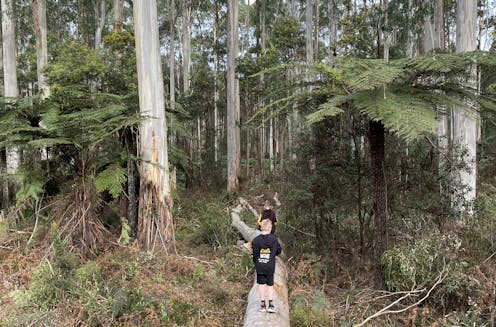Why an intention to conserve an area for only 25 years should not count for Australia’s target of protecting 30% of land
- Written by James Fitzsimons, Adjunct Professor in Environmental Sciences, Deakin University

Protected areas have been the cornerstone of efforts to conserve nature for more than a century. Most countries have some form of protected areas, national parks being the best-known examples. A key element of protected areas is that they are dedicated, through legal or other effective means, to long-term conservation of nature.
Australia has taken an innovative and diverse approach to growing its protected area estate. It includes Indigenous Protected Areas and privately protected areas in the form of conservation covenants and land bought by land trusts. As a result, the country’s protected area estate has grown from 7% in the mid-1990s to 22% of the continent today.
Despite this progress, the Australian government has released new draft guidelines for other forms of area-based conservation, with potentially troubling implications. It suggests 25 years of “intention” to deliver biodiversity outcomes is enough for that land to count for the 30% protected area target.
Our newly published research has looked at what types of land use might qualify in line with international guidelines. We found two problems with the proposal to include 25-year plans for biodiversity outcomes.
First, such plans are non-binding, so protection can lapse at any time. Second, they do not satisfy international and Australian principles of long-term protection. Proceeding with this proposal would undermine the goal of long-term conservation in this country.
The new kid in town
In 2010, parties to the Convention on Biological Diversity added a new, slightly unwieldy term, “other effective area-based conservation measures”. These conservation areas (OECMs for short) complement protected areas in achieving global conservation targets. An OECM is a geographically defined area that is not already a protected area, “which is governed and managed in ways that achieve positive and sustained long-term outcomes for the in situ conservation of biodiversity”.
In 2022, the world lifted ambitions for protection and conservation to 30% of land and water areas by 2030 as part of the convention’s Global Biodiversity Framework. There’s been a surge of interest in OECMs to help meet that target.
International guidance on OECMs has been developed only relatively recently. This creates an urgent need for country-specific analysis.
In our peer-reviewed paper in the journal Conservation, we explore policy issues related to OECMs in Australia. We looked at what types of land use might qualify, with a focus on longevity.
What’s the Australian response?
The Australian government has released a draft set of principles to guide OECM development in Australia. The consultation period closes on April 17.
These principles are largely in line with global guidance. However, a couple of significant deviations could compromise Australia’s leadership in area-based conservation.
The most notable deviation relates to the definition of “long-term”. It’s fundamental to whether a site meets the criteria for contributing to global targets. The proposed principles suggest 25 years of “intention” to deliver biodiversity outcomes is enough.
This is a problem for two reasons. First, “intention” does little for biodiversity if the landholder chooses to sell their property a few years after being recognised as an OECM and the new owner has no such conservation interest.
In contrast, conservation covenants are a tool that all states already use to counter against this very scenario. The covenants are attached to the land title and bind future landholders forever. For this reason, these are considered privately protected areas.
Second, a 25-year timeframe is at odds with long-established Australian policy for defining “long-term” for protected areas. A minimum timeframe of 99 years is required if permanent protection is not possible.
The proposal is also inconsistent with the 2023 Nature Repair Act. This law added provision for a 100-year agreement (in addition to its original 25-year agreement) during consultations. This change was based on feedback that 25-year agreements did not equate to long-term.
So where did the 25-year proposal come from? It seems to misinterpret global guidance for privately protected areas. Regardless, adoption of a 25-year “intention” would be a significant backslide for conservation policy in Australia.
So what other areas might count?
Defence land and protected water catchments on public land are often suggested as good candidates in Australia and overseas. Many contain large and significant ecosystem values. The primary use is often compatible with those values.
These areas are also usually permanent fixtures of the landscape, meeting a long-term public need. Thus they would likely qualify as OECMs.
Many local government reserves protect important areas of bushland and manage it for that purpose. Typically, they have not been classified as protected areas. Many are likely to qualify as OECMs.
On private land, it’s a little more challenging. Long-term carbon agreements and biodiversity offset agreements are likely to qualify – despite controversy at times over their primary use.
Land for Wildlife is a successful, high-profile program for engaging landholders with wildlife habitat on their property. Their distinctive blue-diamond-shaped signs adorn over 14,000 properties around the country.
However, these agreements are non-binding. A landholder could remove them at any time. This means they cannot be considered long-term or qualify as an OECM.
Regardless of the assessments above, each site would need to undergo an individual assessment to ensure it meets the criteria.
The importance of longevity
Ultimately, more land managed for conservation is good and all forms of area-based conservation should be encouraged. However, not all forms of area-based conservation qualify for inclusion in global biodiversity targets. Long-term outcomes are fundamental.
Australia has a proud history of innovative protected area policy and approaches. The development of OECM policy in Australia needs to complement and advance that, not erode the standards for long-agreed definitions of long-term.
Authors: James Fitzsimons, Adjunct Professor in Environmental Sciences, Deakin University





